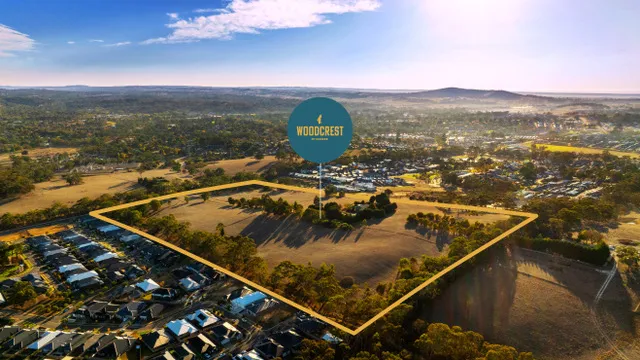‘Piece of the puzzle’: Spotlight on Mount Barker’s relentless growth

Mount Barker’s population far exceeds predictions from 20 years ago, and more than half of them leave their hometown for work. In a four-part series, InDaily takes a look at Adelaide’s ever-growing outer suburbs focusing on Mount Barker.
Civecon Developments recently released plans for a new $90 million master-planned community in Woodcrest that aims to release 300 more housing allotments in the balooning district of Mount Barker.
Part of the 18-hectare project includes building a Heysen Boulevard extension, funnelling traffic between Wellington Road and Flaxely Road, so commuters can get around the town and leave it for work more easily.
It comes as Mount Barker Council plans to keep its residents working locally, with a decrease in working populations outside of the city being earmarked as a measure of success in its 2044 Community Plan.
In a 2003 report obtained by InDaily via FOI, the state government projected that if housing demand was met in Mount Barker over the next 20 years, the Mount Barker population would double from 15,000 to 30,000.
That figure has already been far exceeded, with 45,000 residents in 2024. And it’s still growing.
The Mount Barker District forecasts a population of about 63,300 people living in the district, most of them in Greater Mount Barker.
Woodcrest’s 300 allotments follow Cedar Woods announcing its own 860-dwelling master planned community in May.
You might like
Woodcrest would sit between two other developments, Springlake Communities and Lanser’s Clover Wood, and all three projects include upgrading a part of Heysen Boulevard to allow commuters access in and out of the new builds and to amenities in the Mount Barker South Shopping Centre.

Woodcrest is Civecon’s first Mount Barker project, and slots into one of the last remaining blocks along Heysen Boulevard, which has been earmarked to be the big public transport network around the town – something Director & Development Manager Ian Day said added to the site’s allure.
“It’s a challenging engineering block, it’s got a lot of slope in certain areas of this block to make it work, and obviously the costly infrastructure Heysen Boulevard but we’ve got a really good design team, and they’ve managed to come up with a really great result,” he said.
Day said the group was targeting first homebuyers and wanted to fill its new homes with families.
“We’re very conscious of the affordable housing sector at the moment, the crisis in that area, to be able to provide affordable housing is a big part of our business philosophy, especially in growth areas like Mount Barker and in the northern growth areas that we’re working in,” he said.
“Woodcrest gives a unique opportunity to achieve the dream of homeownership in a master planned development just a short distance from Adelaide.”
He said developers helping the government build infrastructure were a growing requirement.
Subscribe for updates
Mount Barker Council’s Planning and Community General Manager Natalie Armstrong explained upgrades occur in a “piecemeal fashion”.
“The deed that developers have with the State Government specifies that road construction, including sections of Heysen Boulevard, occurs in a piecemeal fashion, with each developer of a land parcel constructing their section of the road when they choose to develop their land,” she said.
Mount Barker Mayor David Leach said that Heysen Boulevard is a developer’s responsibility.
“It does make it easier for everybody living in those new areas to get around the town, because Heysen Boulevard is cut off at two or three places at the moment, and traffic can’t go through. So we are keen for developers to develop their part of the Heysen Boulevard.
“So every new developer that comes along will help towards the completion of that Heysen Boulevard.”
He said arterial roads are a state government responsibility and still need work, but feeder roads are a compromise between the council and developers.
Day said the road upgrade is “just one piece of the puzzle” to help people get in and around Mount Barker.
“This block of land has been waiting for someone to come develop it for a long time, but because of the impost of the infrastructure costs on the project, it’s waited for someone like us to come along and be able to crack it and make it work.”
The Mount Barker District Council provided InDaily with recent figures showing 56.1 per cent of residents work outside the Mount Barker district, and 12.9 per cent of those residents worked in the City of Adelaide.
Armstrong said the rapid population growth was a positive.
“Presenting opportunities for economic prosperity, job creation, and improved services through increased investment and population,” she said.
“However, this rapid growth also poses significant challenges, particularly in providing essential infrastructure and services, and requires careful, sustainable planning to preserve the region’s environmental and social values.”
She said more development within Mount Barker assists with the Federal and State Governments’ housing supply through the National Housing Accord, which aims to build 1.2 million new homes over five years.
On-site preparations and civil construction on Woodcrest will begin later this year, with the first homes expected to begin construction in mid-2026.





